The Lineage of the Last German Rosicrucians
One of my favourite claims seen in occult Orders today is supposed link or lineage to the Golden Rosenkreuzer Order of Germany of 1777. Many Orders claim its heritage, stating they are its “true continuation,” or have somehow preserved its initiatory chain in some way. Despite the trumpeting of many such claims, all evidence points to the contrary. People have been telling porkies.
That being said, in this post I’ll reveal the interesting relationship between Alois Mailander (the awaited Rosicrucian prophet of the late 1800’s) and the Golden Rosenkreuzer (hereafter “GuRC”). Despite the assertions of today’s many claimants however, this post also reveals evidence of a factual transmission.
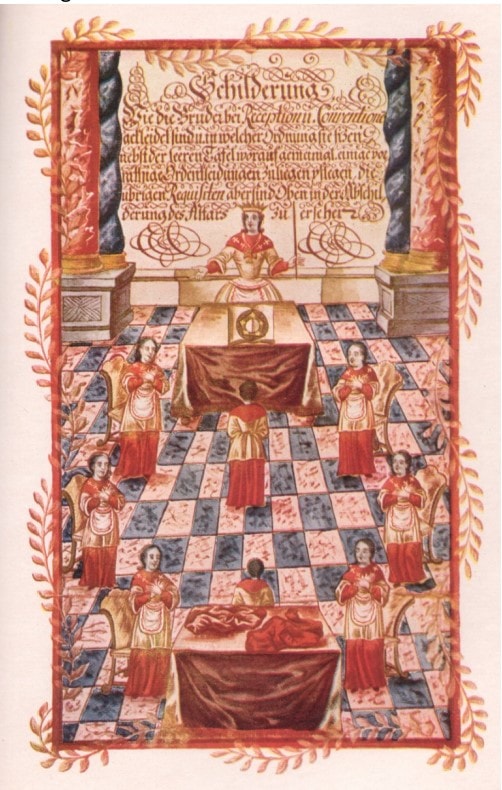
For those who missed it, this article is our third instalment unveiling the secret Rosicrucian heritage of Alois Mailander. Previously, Richard Cloud was the first to reveal that in fact not only was Alois Mailander the secret teacher of Blavatsky and Rudolf Steiner, he and his methodology of regeneration stood at the apex of German Rosicrucianism at the end of the 20th century.
The Golden Dawn is one of the popular groups that has also claimed a GuRC lineage of some sort, apparently arising from its early days. Its similarity to the GuRC is in the names of its grades, but that is where the similarities end. The G.D teaches magic, and the GuRC taught practical alchemy, with a side focus on magic, that magic being of a very different kind (more like Elu Cohens).
Interestingly, having a lineage to the GuRC might not actually be a good thing and those claiming that lineage are probably not aware of the facts. It was a failed Order after all, far too hierarchical, and many of its experiments did not work. In fact, some other Rosicrucians called them ‘false Rosicrucians.’ They did however gather some earnest adherents.
Even if a GuRC lineage might not be all that its cracked up to be, it certainly was the Rosicrucian renewal of the 1700’s and most problematic of all, however, is that from amongst the Orders that today claim a GuRC lineage none of them actually have a single shred of evidence. Zero, Nada, Zilch.
Yes, they are probably lying and blowing wind.
Alois Mailander died in 1905, and was, apparently, the awaited Rosicrucian Elias Artista. Why a Rosicrucian prophet would need an R.C lineage is a little beyond me, however, it is known here in Germany that the last Rosicrucians were looking for a child soon to be born. Prestel is the one to have found him at a weaving factory and “began the awakening of his memory of his past life as John.”
At the time Arthur Waite (member of the G.D and founder of the F.R.C) went to great lengths to discover if such a GuRC lineage was still active in Germany. After all, the founders of the Golden Dawn, Mathers and Westcott, certainly made it seem the Golden Dawn was supported by such Germans.
Waite searched far and wide, asking many questions to all the right people.
I will point out here that Waite came so very close! But he also made a grave mistake!
Waite nearly got there. In his “The Brotherhood of the Rosy Cross,” page 12, we read:
“Towards the end of the nineteenth century there came forward, however, a German claimant to distinction, named Karl Kieswetter, author of a brief monograph on the History of the Order of the Rosy Cross. He affirmed that he was a direct descendant of the last Chief or Imperator of the Brotherhood; that he was in a sense its literary heir and was in possession as such of many priceless Rosicrucian manuscripts.”
The figure of Karl Kieswetter (also called Kiesewetter) was an active occultist and died in 1895.
Waite writes in his footnote to the above that:
“The Imperator in question is said to have been his great-grandfather, a most zealous member of the Order during a long space of time. From 1764 to 1802 he was engaged in transcribing the archives, presumably for his personal use, and these are the MSS. which passed into Kieswetter’s possession. But he speaks otherwise as if they were originals, each being inscribed with the date on which it was written and with the name of the Imperator by whose directions it was prepared. Those of the earliest period belonged to the year 1400.”
Christopher McIntosh and Tobias Churton both point out that indeed Kieswetter’s great-grandfather was the actual successor of the last Imperator of the Golden Rosenkreuzer. Tobias Schulze of Amsterdam was that last Imperator and his successor was named Haussen, the great-grandfather in question.
The problem for Waite was that nothing came forwards to support all the claims. Waite was looking, and he had a right to be sceptical. After all, many claimed much, and he had already been lied to several times, and by then knew that the cipher manuscripts of the G.D were faked.
After introducing Kieswetter on page 12, Waite then concludes:
“It is to be added that the claims of this German Rosicrucian inheritor are not of a kind to establish confidence apart from documentary evidence, and the documents — which have been sought eagerly — are not forthcoming.”
The documents were not FORTHCOMING.
And so it would seem the trail stops there, dead in its tracks. Or does it?
Yes, unlike Waite, I actually found those missing documents.
Turning back to this GuRC lineage, Willy Schrödter also made quite a thing of Kiesewetter, quoting him:
“In the years from 1764 to 1802 my great grandfather, (Haussen) with unremitting industry, copied out the main contents of the archives and the library of the Order, and this very comprehensive handwritten stock of books is even now in my possession.”
Schrödter says about Haussen:
“He was born in 1792 in Weissenfels, a mining inspector, who was initiated into the Rosicrucian Order in Amsterdam by Tobias Schulze around 1760. He became imperator in 1769 and led the activities of the Order until 1792. On the occasion of a fire at the Kiesewetter home in Meinungen in 1874, some valuable manuscripts perished in the flames together with the Imperator’s seal he had inherited from his great-grandfather.”
Again, all would sadly seem lost.
However, having received instruction in where to collect the lost manuscripts I went looking.
According to the living lineage of Alois Mailander, several collections were made, directly by students of Mailander, which shows the type of material circulated in the Pansophic Circle. The problem is, outside of Germany very few people realize the full extent of who Mailander’s students really were.
One of them was Kieswetter himself. The other was Alexander von Bernus.
Many manuscripts are in circulation in Germany, but one of them of note is at the library in Karlsruhe, which holds the collection of Alexander von Bernus (Rosicrucian and alchemist).
Von Bernus is quite well known in Germany within Rosicrucian circles. In fact, the late Martin Erler, who founded the Ordo Rosae Aurae (Order of the Golden Rose) in Germany after WWII, had von Bernus as his spiritual father. The ORA tradition is still alive and well as one of the last of the old R.C currents like that of Mailander’s. Von Bernus left enough successors to know he was also a student of Mailander himself.
Now, looking at the collection of Alexander von Bernus, you immediately find a copy of a little-known grimoire circulated by Pansophers. Here are the three sections of the 380 page Rosicrucian grimoire, which can be viewed in PDF form here.
 Inside of this extensive manuscript are two dates and names:
Inside of this extensive manuscript are two dates and names:

Kieswetter signed it 1885 and von Bernus 1898. At this time they were both disciples of Mailander.
Meyrink was also in this group and in fact Meyrink’s ‘Angel in the West Window’ was first written by Carl Kiesewetter and titled “John Dee and the Angel from the Western Window” 1895 (Spohr, Leipzig).
Now, the very reason why this manuscript is so vital is seen here:
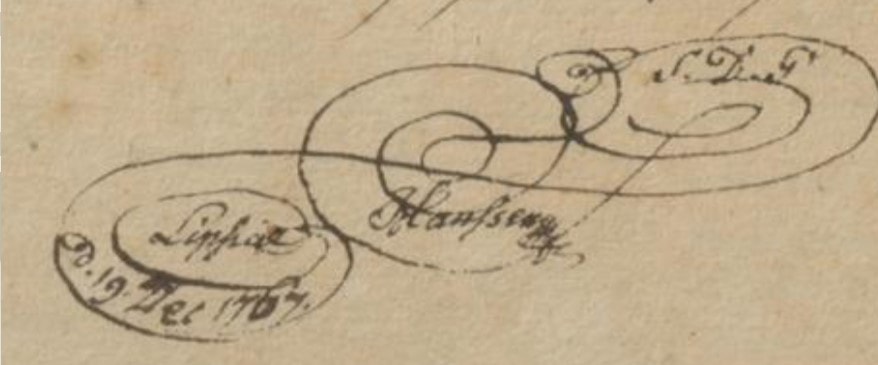
Indeed, that is Haussen’s signature in there, successor of the last GuRC Imperator!
And indeed he was Kiesewetter’s great-grandfather. It’s dated 1767.
Suddenly, the claims of Kieswetter become well founded.
Waite was dead wrong after all or at least, these are the very documents he was looking for.
(I’ll do another post which explains the translations of this Rosicrucian grimoire. Unlike those King Solomon grimoires largely circulated by magicians these are actual grimoires from the Golden Rosenkreuzer, meaning that they were given out at certain grades of initiation in the Rosicrucian Order.)
Actually a careful study reveals Kieswetter’s hand at work over several pages. Waite’s source was Kiesewetter’s monograph, the Sphinx Leipzig 1886, which Waite added in his footnotes.
But, does this prove an actual lineage went from the GuRC to Alois Mailander?
After all, it is well known the two Rosicrucian Orders are different. The GuRC was ultra-structured, hierarchical, masonic and everyone had to report to the person above their rank, and they to their superiors and so on. In contrast Mailander’s group was a pietist (mystical Christian) with little emphasis on lab alchemy but a stronger emphasis on internal mysticism and realization of the Word.
Franz Hartmann describes his meeting with Mailander on page 30 of the Occult Review of 1908. He says of that Mailander that “To give a detailed account of the teachings thus received would require not only a long article but a whole book, and the mystic language in which many of these communications were given would be like some of the writings of Jacob Bohme and Jane Lead.”
Thus, clearly the GuRC and Mailander are worlds apart. (Although several sections from the Secret Symbols of the Rosy Cross are copied from Boehme).
However, Kiesewetter reveals now that:
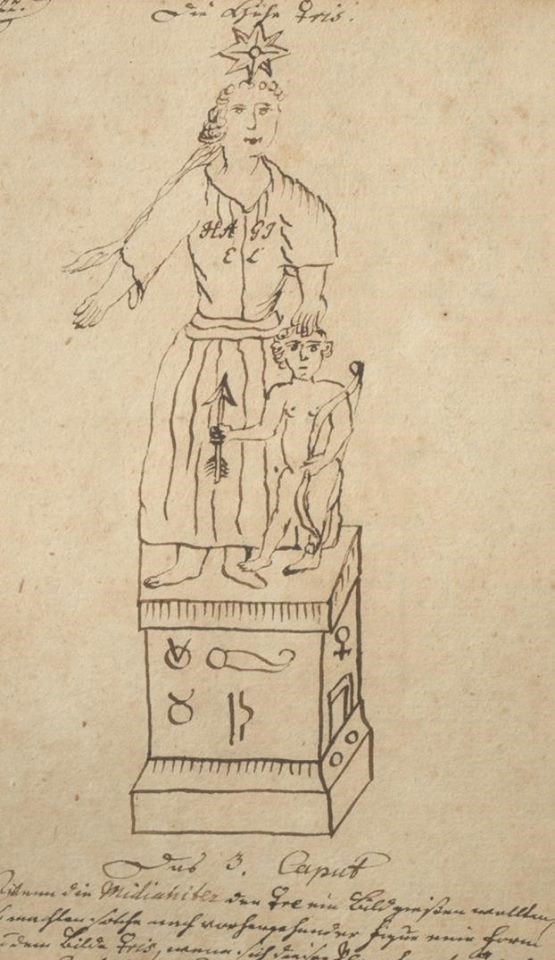
“My great-grandfather was introduced and initiated into the Rosenkreuzers by a certain Tobias Schulze in Amsterdam, the then Imperator of the Rosenkreuzers. In which way this was transmitted unfortunately I cannot determine, but it is clear from his manuscripts, that he was Imperator in the year of 1769… (cut)… Nicolai wanted to explain this phenomenon by saying that they hypothesized that the Jesuits had joined the fraternity following the annulment of their congregation by Pope Clement XIV. All that lacks evidence, and from the papers of my great-grandfather it appears that-contrary to the above assertion- the Rosenkreuzers of their lineage only followed a mystic-Protestant tendency whose doctrine was on biblical ground and sought to defend the mysticism of Jakob Boehme. The tendency of these last Rosicrucians is to combine the emancipatory theory of the Kabbalists with the teachings of Christianity, thus forcing a union of the Rosenkreuzers with the Martinists and the Illuminati… (cut)… But, from the papers of my great-grandfather, we see, on the contrary, that the last real Rosenkreuzers returned to a contemplative silence, and in their works an enthusiastic Christian Theosophie lived. Apparently, the Masonic elements had had been pushed out, so that old structure of the order was out of sight.”[1]
Thus, the transformation of the old GuRC to what Prestel delivered to Mailander is revealed.
Interestingly, of the groups that sprang from Mailander’s influence, they did not know about this GuRC lineage. In fact, they didn’t even know about Mailander’s existence until Richard Cloud revealed the big secret. Therefore, I would like to close with this final point; it would be silly for those groups to suddenly claim they have a Golden Rosenkreuzer lineage. There are groups influenced BY Mailander and those directly FROM Mailander. Secondly, even within Germany, they consider Mailander the prophet and renewer, meaning that the most essential of lineage stems from the moment of his incarnation onwards.
This being said, we are on the verge of a new era, where Pansophy is preparing to leave Germany again, to be delivered to many groups, just as the old Pansophers did in their own time.
In the next post we’ll elaborate upon how Mailander became the new leader of a lodge set up by Eliphas Levi, in Germany, after Levi died and how both stayed in this same house.
Special thanks goes to Christine Eike for her help in reading the difficult writing in this grimoire and unlocking its finer secrets 🙂
New readers, don’t forget to sign up to our blog to read other more interesting articles just like this. We’ll never send you marketing emails. Just a quarterly update on the most recent top post. Sign up if you love this reading and Pansophers!
Samuel Robinson,
Kempten, Germany.
[1] https://digital.staatsbibliothek-berlin.de/werkansicht?PPN=PPN818708190&PHYSID=PHYS_0024&view=fulltext-parallel&DMDID=DMDLOG_0001 Das Freimaurer-Museum , 1930, pg 16


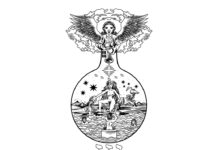
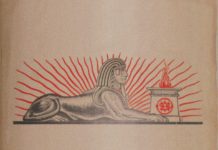







Blog me, please, Sam.